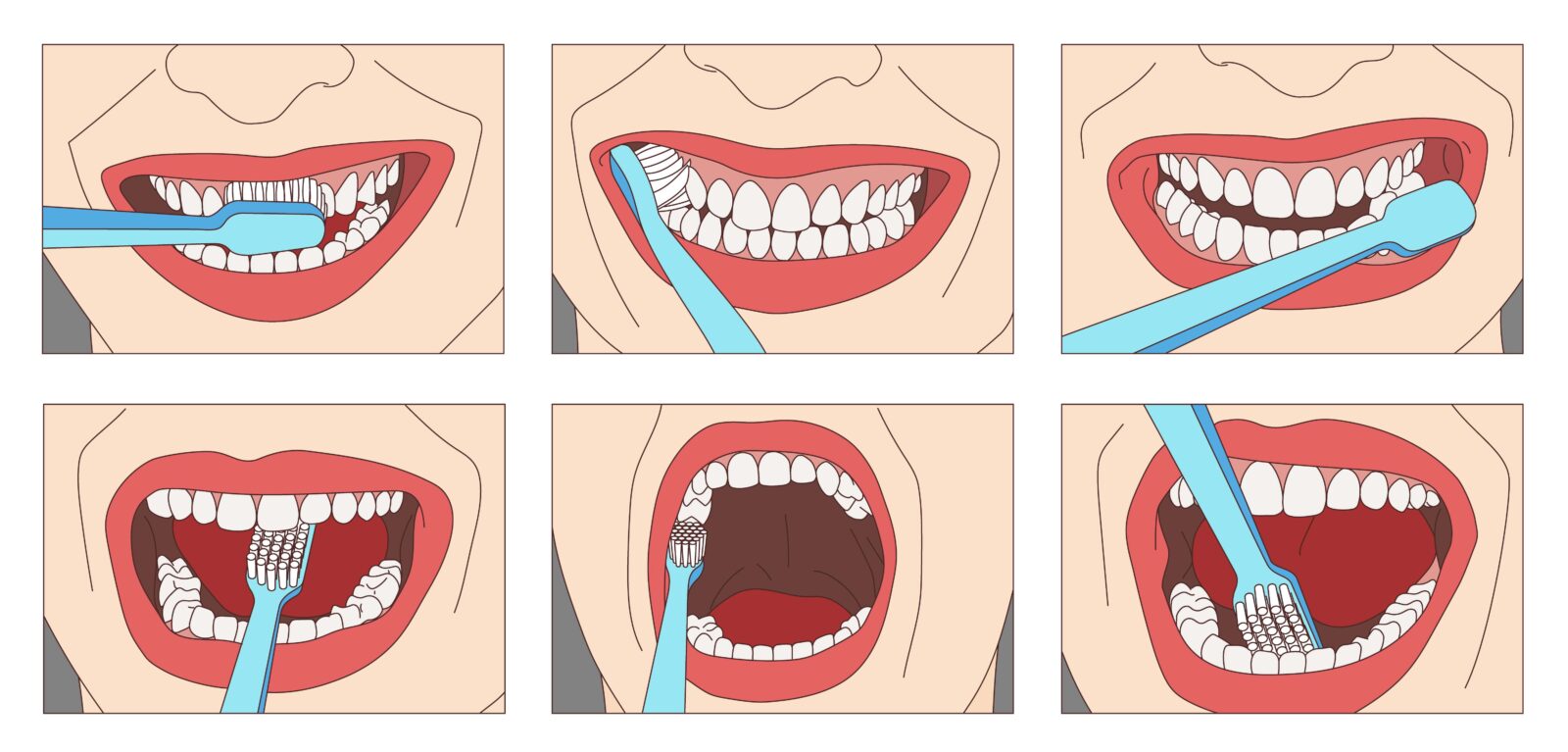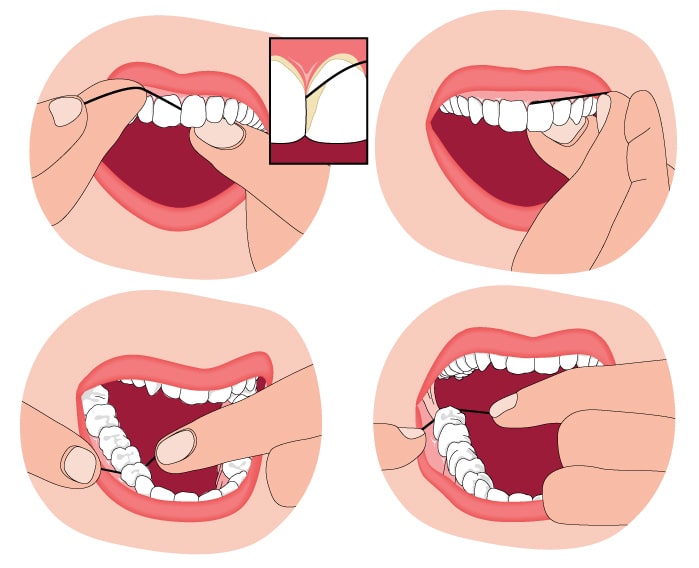Embarking on a journey toward impeccable oral health begins with mastering two fundamental practices: proper brushing and flossing. Despite their critical role in maintaining dental hygiene, many individuals fall short of employing the correct techniques, potentially compromising their oral health. This blog is meticulously crafted to guide you through the essentials of effective tooth brushing and flossing, ensuring that every crevice and corner of your mouth receives the attention it deserves. With expert advice from dental professionals and step-by-step instructions, we aim to transform your daily oral care routine into a powerful defense against plaque, cavities, and gum disease. Whether you’re looking to refine your skills or build a solid foundation from scratch, this comprehensive guide is your pathway to a healthier smile and a brighter future for your teeth.
The Importance of Proper Toothbrushing Technique
Adopting a proper toothbrushing technique is crucial for maintaining oral hygiene and ensuring the long-term health of your teeth and gums. While regular brushing is a fundamental part of oral care, the effectiveness of this routine hinges significantly on the method used. An incorrect technique can lead to missed plaque, increased risk of tooth decay, gum disease, and even can cause harm to the tooth enamel and gum tissue. Conversely, a proper technique ensures the removal of plaque efficiently, minimizes the risk of cavities, and promotes healthy gums, all while protecting the integrity of your mouth’s structures.
Proper Toothbrushing Technique
To maximize the benefits of brushing and safeguard your oral health, follow this comprehensive guide to the proper toothbrushing technique:
1. Choose the Right Tools
Opt for a toothbrush with soft bristles and a head small enough to reach all areas of your mouth. Use fluoride toothpaste to enhance tooth enamel strength and fight decay.
2. Timing and Frequency
Brush at least twice a day, for two minutes each session. Consider using a timer or an electric toothbrush with a built-in timer to ensure you’re brushing for the full duration.
3. The Correct Angle
Hold your toothbrush at a 45-degree angle to the gums. This angle helps the bristles to reach into the gum line, where plaque tends to accumulate.
4. Brushing Technique

Move the brush in gentle, circular motions to remove plaque. The circular motion is more effective than horizontal strokes and is gentler on your gums. Make sure to cover all surfaces of each tooth, including the outer, inner, and chewing surfaces.
5. Be Thorough but Gentle
While it’s important to be thorough, brushing too hard can damage the gums and tooth enamel. Let the bristles do the work and avoid applying excessive pressure.
6. Clean All Areas of the Mouth
Don’t forget to brush the inner surfaces of your teeth, where plaque often accumulates. For the front teeth, tilt the brush vertically and make gentle up-and-down strokes.
7. Don’t Forget Your Tongue
Bacteria on your tongue can contribute to bad breath and negatively affect dental health. Gently brush your tongue or use a tongue scraper to remove bacteria and freshen breath.
8. Rinse Well
After brushing, rinse your mouth thoroughly with water to remove any remaining toothpaste and loosened plaque.
The Importance of Proper Flossing Technique
Flossing is an integral part of oral hygiene, often regarded as the counterpart to toothbrushing in the quest for a clean and healthy mouth. Its importance stems from its ability to reach the tight spaces between teeth and below the gumline—areas where a toothbrush cannot reach. Proper flossing technique is crucial for several reasons: it removes plaque and food particles that contribute to cavities and gum disease, it helps prevent tartar buildup, and it can even play a role in preventing bad breath. An incorrect flossing technique, however, can lead to missed spots or even harm the gums, making the practice less effective and potentially causing discomfort or damage.
Proper Flossing Technique
To ensure you reap the full benefits of flossing, follow these steps for the proper flossing technique:
Choose the Right Type of Floss
There are various different types of floss. It is important to choose the type of floss that will work best for your oral health needs. Here’s a brief overview:
| Type of Floss | Description | Recommended For |
| Waxed Floss | Coated with wax for smoother gliding between teeth. | People with closely spaced teeth. |
| Unwaxed Floss | Thin and without wax, can fit into very small gaps. | Those with very tight spaces between teeth; may fray more easily. |
| Dental Tape | Broader and flatter than standard floss. | Individuals with larger gaps between their teeth. |
| Super Flosses | Sturdy floss designed for cleaning around braces, bridges, and gaps. | People with orthodontic appliances or dental work such as bridges and implants. |
| Water Flossers | Uses a stream of pulsating water to clean between teeth and below the gumline. | Those who find traditional flossing difficult, have sensitive gums, braces, or other dental work. Also for those seeking a comfortable alternative. |
| Pre-threaded Flossers | Small, disposable tools with a piece of floss and a handle. | People on the go, with limited dexterity, kids learning to floss, or anyone who finds traditional flossing challenging. |
| Biodegradable/Environmentally Friendly Floss | Made from natural materials like silk or bamboo fiber. | Environmentally conscious individuals seeking a sustainable option. |
Start with Enough Floss
Cut off about 18 to 24 inches of floss. Wind most of it around one finger on each hand, leaving a few inches of floss to work with between your fingers.
Handle with Care
Hold the floss tightly between your thumbs and index fingers. You should have about 1 to 2 inches of floss to navigate between each tooth.

Gentle Entry
Gently slide the floss between two teeth, using a zigzag motion. Avoid snapping the floss into the gums, as this can cause pain and damage.
Curve and Clean
Once the floss is between your teeth, curve it into a “C” shape against one tooth. Gently slide it beneath the gumline and along the side of the tooth, moving up and down. Repeat this process on the other tooth, ensuring you clean both sides with the floss.
Use a Clean Section for Each Tooth
As you move from one tooth to the next, unroll a fresh section of floss from your finger. This prevents re-depositing the plaque and food particles you’ve just removed.
Don’t Neglect the Back Teeth
Flossing the back teeth can be challenging but is just as important. These teeth are more prone to plaque accumulation and decay due to their location and the difficulty of reaching them with a toothbrush.
Be Gentle
If your gums bleed when you first start flossing, this is often a sign that they are inflamed due to plaque buildup. With regular, gentle flossing and brushing, your gums will become healthier, and the bleeding should stop. However, if the bleeding persists, consult your dentist.
Conclusion
In conclusion, the importance of employing proper toothbrushing and flossing techniques cannot be overstated in the realm of oral hygiene. These fundamental practices are the bedrock of a healthy mouth, effectively preventing plaque buildup, tooth decay, gum disease, and ensuring the longevity and strength of your teeth and gums. Correct techniques ensure that every corner of your mouth is adequately cleaned, safeguarding against the potential onset of oral health issues that can impact overall well-being. Moreover, these habits contribute to fresher breath, a brighter smile, and a boost in confidence. By dedicating just a few minutes each day to brushing and flossing correctly, you invest in not only your oral health but your general health, underscoring the profound significance of these essential daily rituals in maintaining a vibrant, healthy life.



